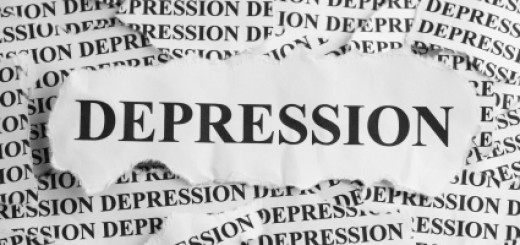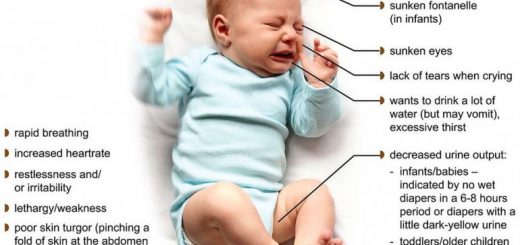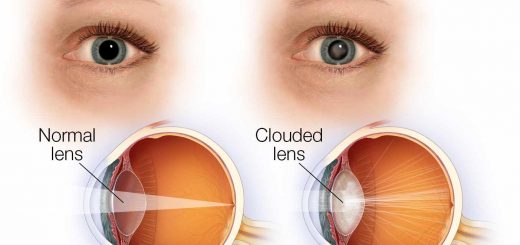First Aid For Rabies Exposure: 9 Effective Relief Tips
Have you ever been worried about rabies after an animal bites or scratches you? It happens!
Rabies is a scary disease, but acting quickly can make a big difference. This blog will walk you through first aid for rabies exposure with clear steps and helpful tips. Let’s get you feeling informed and back in control!
Recognizing Rabies Exposure
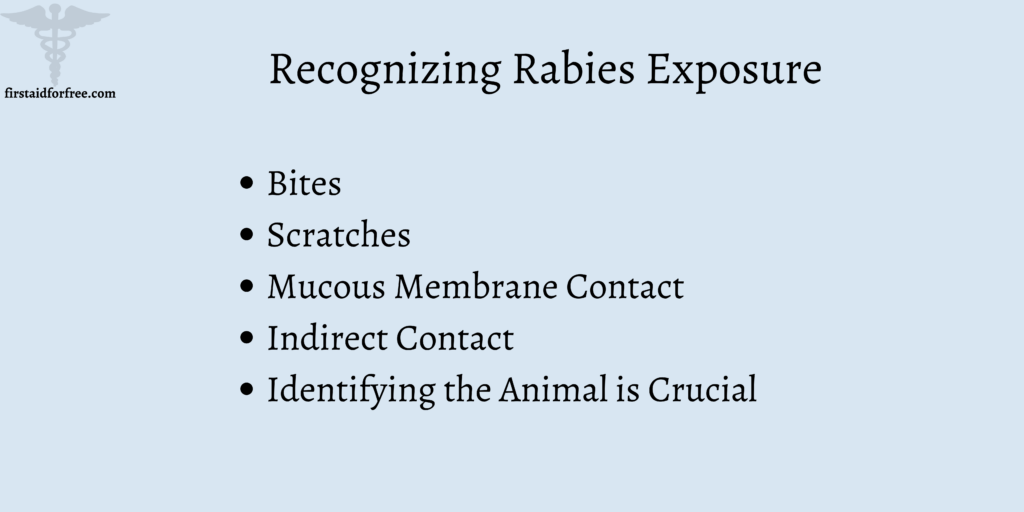
Rabies is a serious viral disease almost always fatal once symptoms appear. However, prompt action after exposure can effectively prevent the virus from taking hold.
The key lies in recognizing situations that might constitute rabies exposure and taking the necessary steps immediately. Here’s a breakdown of key points to consider:
Bites
This is the most common form of rabies transmission. Bites from any mammal, including wild animals like raccoons, bats, and foxes or domestic animals like dogs, cats, and even ferrets, should be considered potential exposure if the animal is suspected to be rabid.
The severity of the bite doesn’t necessarily determine the risk. Even minor scratches or punctures can transmit the virus if they come in contact with saliva.
Scratches
Rabies can also be transmitted through scratches. This can happen if a rabid animal scratches your skin with its claws.
Mucous Membrane Contact
Rabies can enter the body through mucous membranes, such as the eyes, nose, or mouth. This can occur if infected saliva gets licked onto these areas.
Indirect Contact
In very rare instances, the virus might be transmitted through contact with contaminated objects like saliva on bedding or tissue from a rabid animal. However, this is less likely compared to direct bites or scratches.
Identifying the Animal is Crucial
Knowing the animal that inflicted the bite or scratch is vital for determining the next steps.
Domestic Animal: The risk of rabies is significantly lower if bitten by a pet with a known vaccination history. However, it’s still crucial to consult a doctor to discuss the situation and the pet’s vaccination status.
Wild Animal: Wild animals are more likely to be carriers of rabies. Bites from any wild animal should be treated as a high-risk exposure and require immediate medical attention.
9 Immediate First Aid Steps
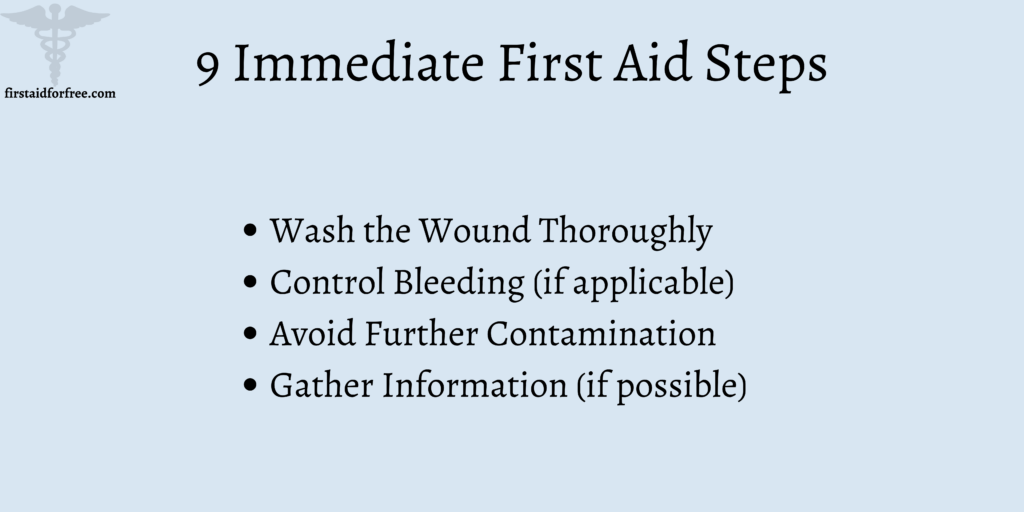
Rabies is a fast-acting virus, so swift action following exposure is critical. Let’s explore the crucial first-aid steps you should take:
Wash the Wound Thoroughly
- The primary goal is to flush out any rabies virus particles present in the wound. Time is of the essence here. Wash the wound immediately with clean running water for at least 15 minutes.
- Use plenty of water and mild soap, like liquid dish soap or gentle hand soap. Avoid harsh soaps or antiseptics, as they can damage tissues and hinder the cleaning process.
- Gently but thoroughly clean the entire wound area, including any surrounding skin that might have come into contact with saliva.
Control Bleeding (if applicable)
- If the bite or scratch is bleeding, apply gentle pressure to the wound with a clean cloth or sterile gauze pad to slow down the bleeding.
- Do not apply a tourniquet. This can restrict blood flow and hinder the body’s natural healing processes.
Avoid Further Contamination
- Once the wound is cleaned and bleeding is under control, rinse the cloth or gauze pad used for cleaning and discard it properly in a sealed container.
- Wash your hands thoroughly with soap and water for at least 20 seconds to prevent transferring any potential virus particles to other parts of your body or others.
Gather Information (if possible)
- While attending to the wound, try to gather as much information as possible about the animal, especially if it’s wild. Note its appearance, behavior, and any distinguishing features.
- If bitten by a domestic pet, try to find out its vaccination history. This information will be crucial for the doctor to determine the next course of action.
These first-aid steps are meant to be temporary measures until you can seek medical attention. Do not delay getting professional medical help after any potential rabies exposure.
Seeking Medical Attention
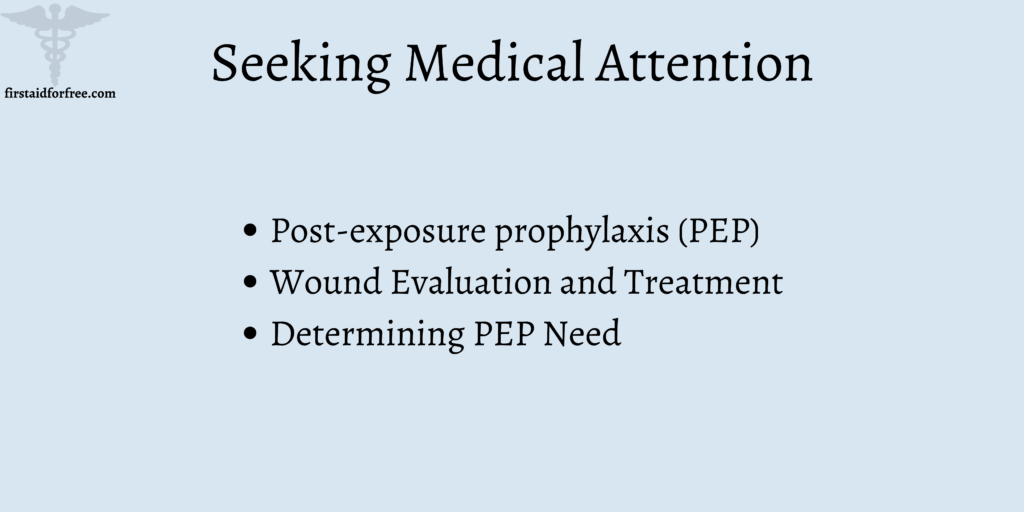
As mentioned above, rabies is a terrifying virus because once symptoms develop, the disease is almost always fatal. However, immediate medical attention after exposure can effectively prevent the virus from becoming severe. Learn why seeking immediate medical attention is crucial:
Post-exposure prophylaxis (PEP)
- The cornerstone of rabies prevention after exposure is a series of shots called Post-Exposure Prophylaxis (PEP). These shots work by stimulating your body’s immune system to produce antibodies that fight off the rabies virus before it can cause symptoms.
- The effectiveness of PEP is significantly higher when administered as soon as possible after exposure, ideally within the first 24-48 hours. The longer the delay, the less effective PEP becomes.
Wound Evaluation and Treatment
- A doctor will thoroughly examine the wound, assess the severity of the exposure, and clean it further if necessary. They may also prescribe antibiotics to prevent bacterial infections at the wound area.
Determining PEP Need
The doctor will determine if PEP is necessary based on the details of the exposure (e.g., the type of animal, the animal’s vaccination status, etc.).
- High-Risk Exposure: Bites from wild animals, unknown animals, or animals with unknown vaccination status are considered high-risk exposures and will always require PEP.
- Moderate-Risk Exposure: Bites from unvaccinated domestic animals or situations where the animal cannot be located are considered moderate-risk exposures and may require PEP, depending on the doctor’s assessment.
- Low-Risk Exposure: Scratches or licks from healthy, vaccinated domestic animals are considered low-risk exposures and typically don’t require PEP.
Additional Tips
While immediate first aid and medical attention are crucial after potential rabies exposure, there are some additional steps you can take to manage the situation effectively:
1. Contact Animal Control (if applicable)
- If the animal that inflicted the bite or scratch is wild or unknown, it’s important to contact animal control immediately.
- They can capture the animal for testing to determine if it’s rabid. This information is vital for determining the appropriate course of treatment for the exposed person.
- Do not attempt to capture the animal yourself. Doing so can increase your risk of bites or scratches.
2. Follow Up on Vaccination Status
If bitten by a domestic pet, find out about its vaccination history as soon as possible.
- Up-to-date Vaccination: If the pet’s rabies vaccination is current, the risk of rabies is significantly lower. The doctor may still recommend monitoring the animal for any signs of rabies for a period of observation, but PEP for the exposed person might not be necessary.
- Unvaccinated Pet: If the pet is unvaccinated or its vaccination status is unknown, PEP will most likely be recommended for the exposed person. It’s also crucial to report the unvaccinated animal to animal control officials.
FAQs
I was bitten by a stray dog. Do I need a rabies shot?
Maybe. See a doctor right away! Bites from wild or unknown animals are high-risk and require immediate medical attention to determine if PEP (rabies shots) are needed.
How long do I have to see a doctor after a potential rabies exposure?
The sooner, the better! PEP (rabies shots) are most effective when given within 24-48 hours of exposure. Don’t wait for symptoms; seek medical attention immediately.
Can I get rabies from my pet cat?
It’s very unlikely. Up-to-date rabies vaccination for pets significantly reduces the risk. If bitten by an unvaccinated pet, consult a doctor.
Conclusion
We hope this article was informative and that you learned about first aid for rabies exposure. It is essential to recognize the signs that can lead to the disease.
Seek immediate medical attention after the exposure.

